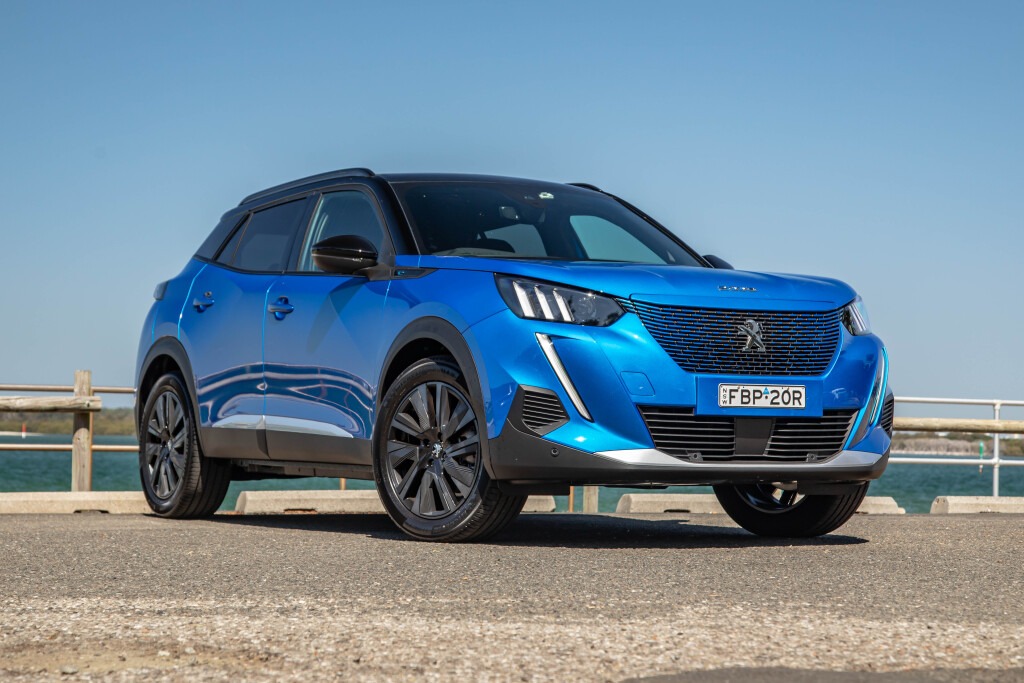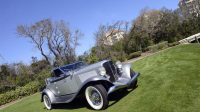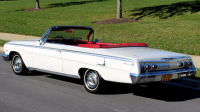After a bit of will-they-won’t-they – Peugeot is big on the straight-bat approach to questions about new product – the local arm settled on the E-2008 to spearhead its push into electrification.
Peugeot isn’t necessarily a brand you associate with cutting-edge innovation. All the cool stuff in a Pug happens down below, with clever chassis solutions and (mostly) excellent ride and handling. (I speak as an owner of a 25-year-old Peugeot 306 that is remarkably reliable and conservatively engineered but drives beautifully. Still.)
The 2008, despite being a compact SUV, manages quite well to be a proper Peugeot. It’s fun to drive, interesting to look at and comes with that long-established pedigree but without that tinge of “that’s not a bug, it’s a feature” from its owners.

Things look to have fallen apart on the starting line, however, as the E-2008 is priced at a hefty $59,990 before on-road costs.
Peugeot doesn’t pretend to be anything but an upmarket brand in Australia, with the 308 GT PHEV clocking in at a whopping $64,900 excluding on-road costs, so it’s with a small amount of relief I tell you the E-2008 is cheaper than that. But sixty large ($59,990, or about $65K drive-away) places it very close to serious competition.

2023 Peugeot E-2008 standard features 18-inch alloy wheels 6-speaker sound system Adaptive auto LED headlights Auto high beam Auto wipers 10-inch digital dashboard with 3D effect 10-inch touchscreen Wired Apple CarPlay Wired Android Auto Satellite navigation
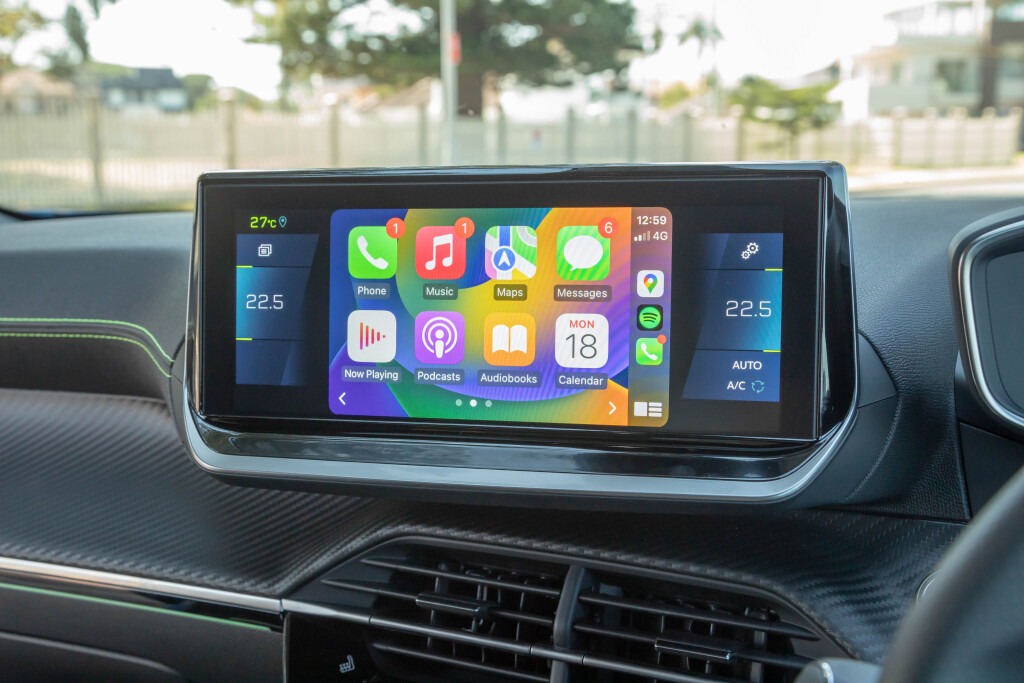 DAB+ digital radio Dual-zone climate control Heated front seats Power front-seat adjustmenr Keyless entry and start Tyre repair kit Climate control Driver’s seat massage function It’s not a lavish spec, but few EVs have that, going for a restrained list of features ostensibly to keep the price down. Sadly the price down bit seems to have been lost here.
DAB+ digital radio Dual-zone climate control Heated front seats Power front-seat adjustmenr Keyless entry and start Tyre repair kit Climate control Driver’s seat massage function It’s not a lavish spec, but few EVs have that, going for a restrained list of features ostensibly to keep the price down. Sadly the price down bit seems to have been lost here.
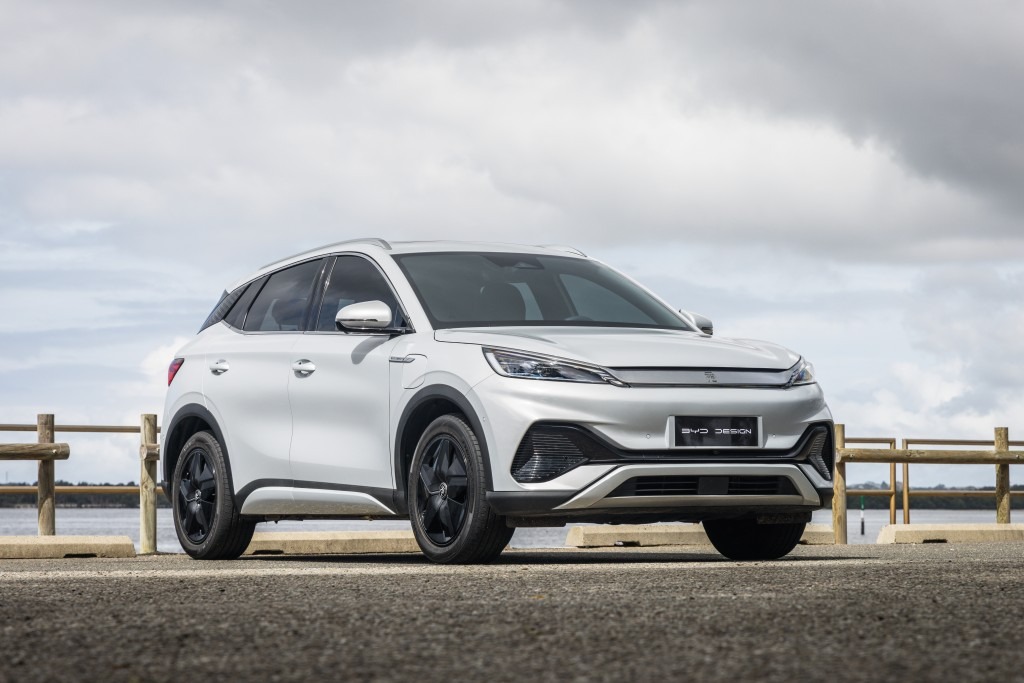
How do rivals compare on value? You can spend a bit less or a bit more to get an EV with a similar driving range – if not similar size – to the E-2008.
Starting at under $40,000 before on-road costs is the MG4 55 Excite. While it’s not strictly a compact SUV it has similar interior space and sort of looks like one. It’s got a lot less standard kit but it’s also twenty grand cheaper.
In the mid-to-late-$40Ks is the BYD Atto 3. It’s more like the E-2008 although its inventive interior is not as convincing as the Peugeot’s.
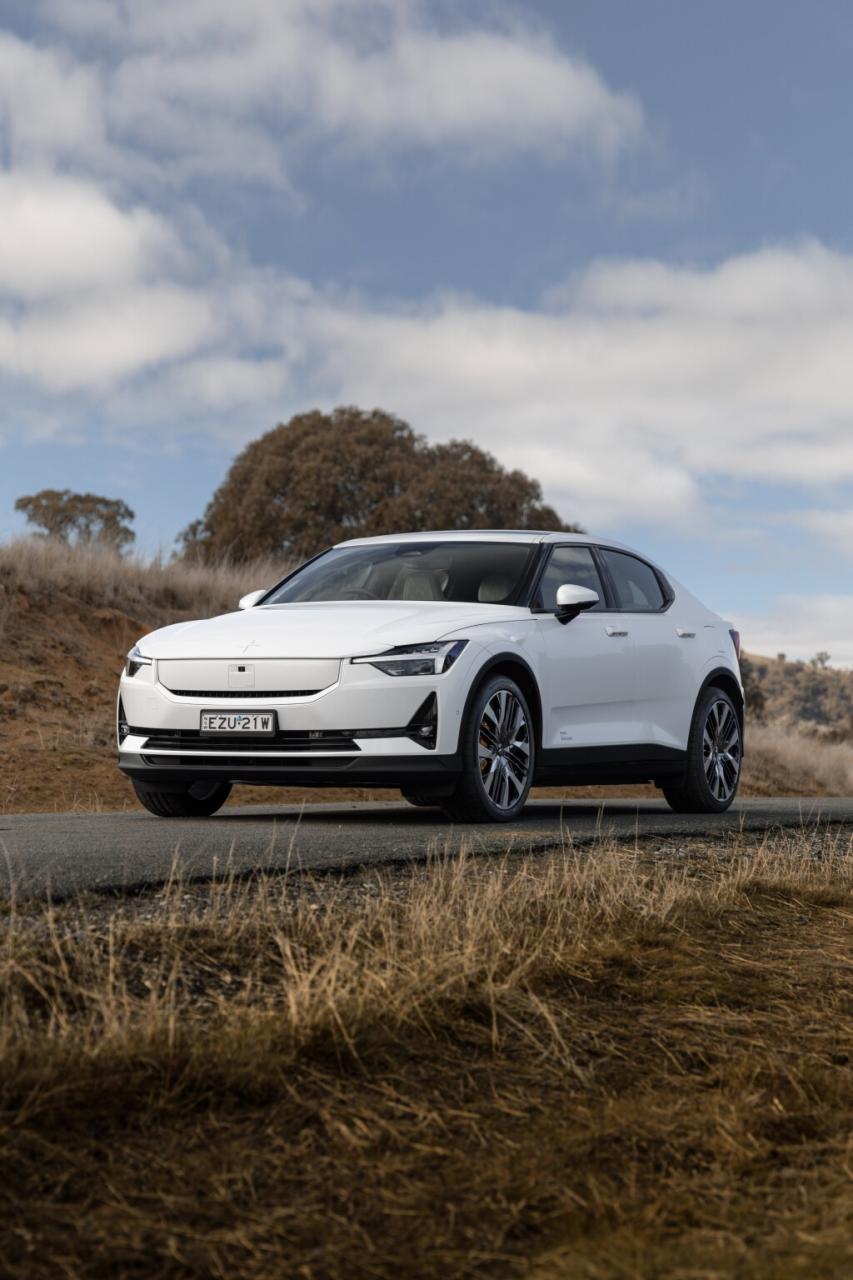
Spend a bit more than sixty grand and you have the choice of the perennial EV fan favourite, the Tesla Model 3 in rear-wheel drive form for $61,900 before on-road costs but you’ll be waiting a few months for the facelifted version that still doesn’t have a proper dashboard. Its claimed range of 513km is probably closer to 450km in reality but if the open road beckons, you should probably look here.
Or at the just-updated MY24 Polestar 2. The entry-level 505km WLTP-ranged rear-wheel drive version is now $67,400 plus on-road costs, with deals going on MY23 cars you can drive away straight away.

There’s the BYD Dolphin, too, at a hundred fewer bucks less than the MG but like the GWM Ora, probably not one you’ll cross-shop with the E-2008.
States are busy backing away from their EV incentives, so these prices represent what you’ll actually be paying in NSW from January and now in Victoria. It’s not as hard a blow if the NSW government uses the money to build charging stations, but don’t hold your breath.
 One of the great things about Peugeot is the inventive yet usable approach to interiors.
One of the great things about Peugeot is the inventive yet usable approach to interiors.
They look great and are awesome places to spend time. While things look a bit whack-a-doo – and the driving position remains an acquired taste – there’s no denying a genuine design flair across the range.
Peugeot’s weird driving position does work well in the 2008, as it does in the larger 3008/5008 pair. A more upright SUV stance is probably the key here, although the wheel still feels a bit low in your lap. The 3D-effect digital dash is great once you’re used to it; the way it brings pertinent information to the foreground is very phone-like and I dig it.
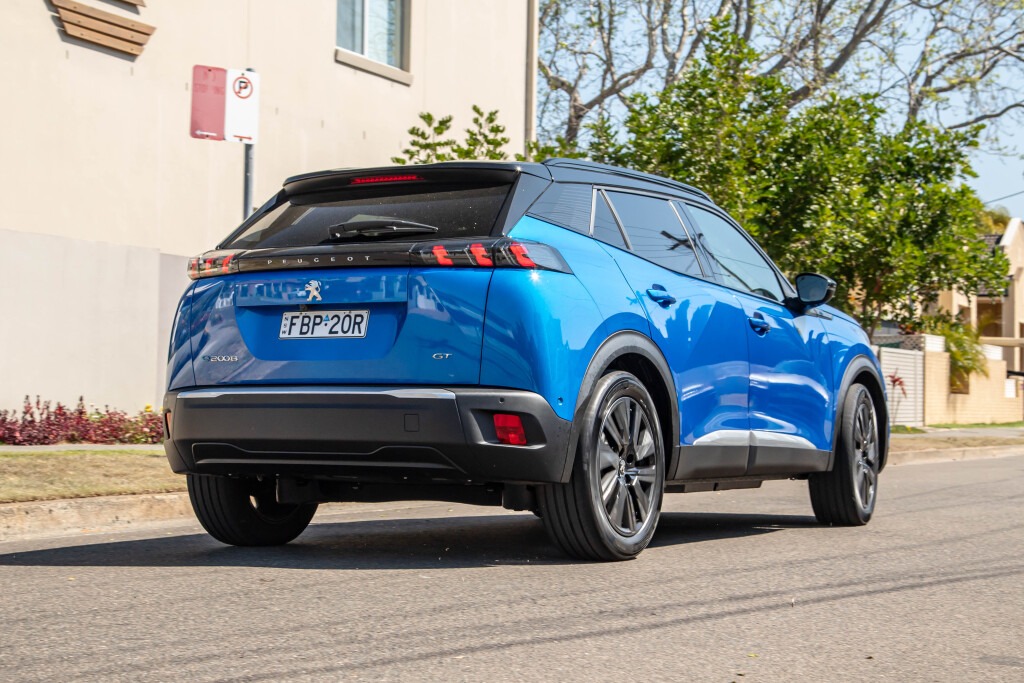
The front seats are great, too, with a mix of leather (probably fake) and Alcantara. They’re as comfortable as they are good-looking and even have a massage function that can ease tired backs and bums on a long drive. Which, let’s be honest, isn’t going to happen very often with a 300km range.
You have a 10-inch touchscreen as well, which is a nice installation but still a bit finicky to use. The range of shortcut buttons underneath (and a proper volume dial) take the sting out of that laggy hardware but dead set, the reversing camera is hopelessly grainy and blocky.
A pair of cup holders, a wireless phone charging pad and a weird openable tray under the aircon are all present and correct on a spacious console that features a VW Golf-style toggle switch (or, as I prefer, toddler’s tongue) to clean up the space.
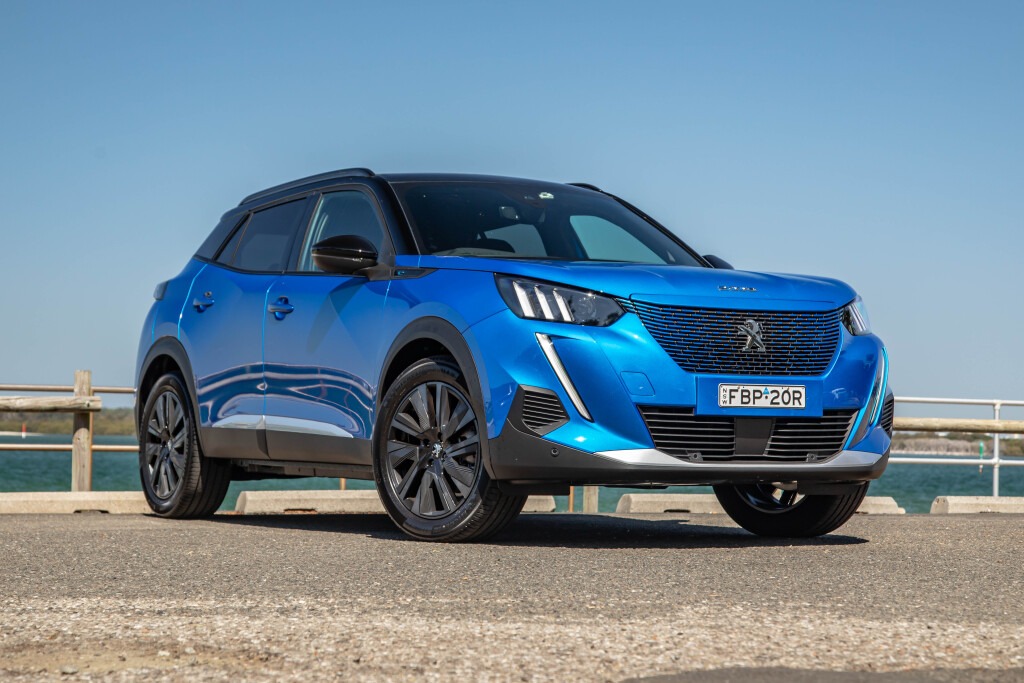
To connect your phone, there’s a USB-A port and a USB-C charging port on either side of the console. At the rear of the console is a lidded bin doubling as an elbow rest.
Rear seats are similarly plushly covered in Alcantara and leather. Leg and knee room is acceptable for me behind my driving position. At 180cm I’m not a skyscraper but not short either. Three across will be a challenge because of the surprisingly big transmission tunnel that points to the ICE platform origins.
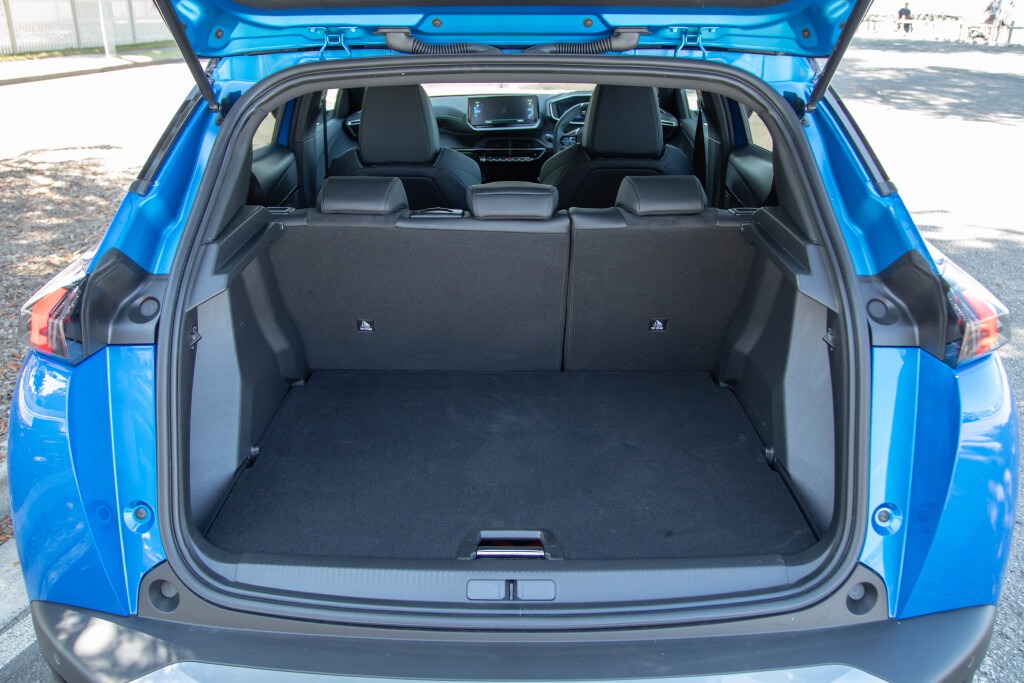
There aren’t any air vents back here, nor is there an armrest or cup holders, so it’s a bit, er, economical. You can squeeze a bottle in the doors though. The seats themselves are comfortable and there’s good headroom, however, the headrests are a bit ho-hum and the windows high and slim. There are two USB ports, though.
In what appears to be good news, the petrol and electric 2008s share the same boot capacity – 434 litres with the seats up and 1467 with them down. On their own, that’s a pretty good deal in this segment. The E-2008, however, misses out on a spare tyre to bridge that gap.
 The E-2008 ships with a 50kWh lithium-ion battery pack that has a 400-volt architecture.
The E-2008 ships with a 50kWh lithium-ion battery pack that has a 400-volt architecture.
A Type 2 CCS with DC plug fits in the rear left quarter panel which is fairly convenient as long as you’re happy to back into the space.
Peugeot quotes a maximum charge rate of 100kW, meaning you’re wasting your time looking for a faster and more expensive 350kW rapid charger. Charge time from 10 to 80 per cent is a claimed 30 minutes, which isn’t too bad. I plugged in for a brief squirt at a 50kW charger and it held full speed. You won’t always get that from a charger, but the E-2008 clearly works when full whack is available.
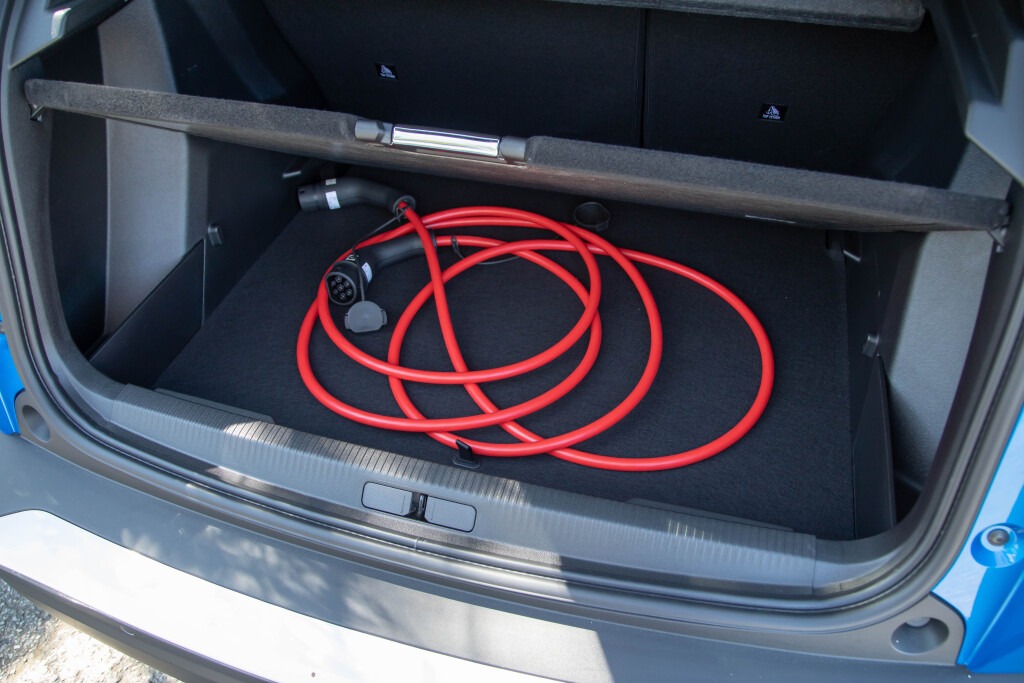
There’s a lot to be said for a city-bound EV having a sensibly-sized battery – the E-2008’s is comparable in size to the long-range Atto3 and base model MG4 – because short trips and short charges work well into the likely usage pattern, assuming charge station availability. Again, though, you expect a lower up-front price.
Charging at home is the usual slow affair, with around 16 to 24 hours for a full charge on the Type 3 cable hooked up to the mains or five hours if you have a wallbox.

